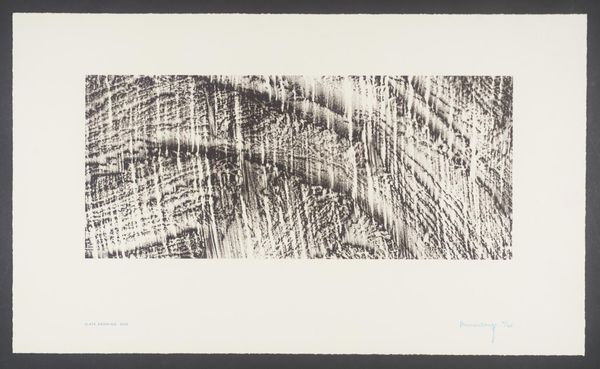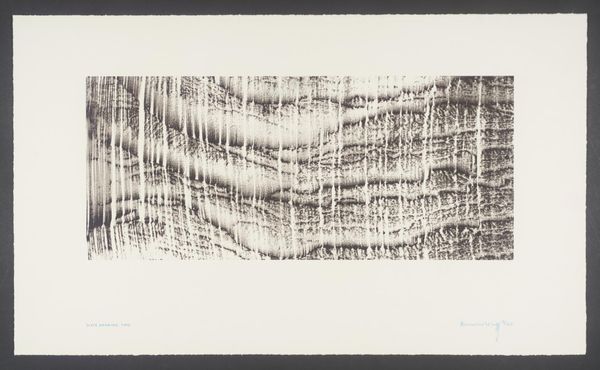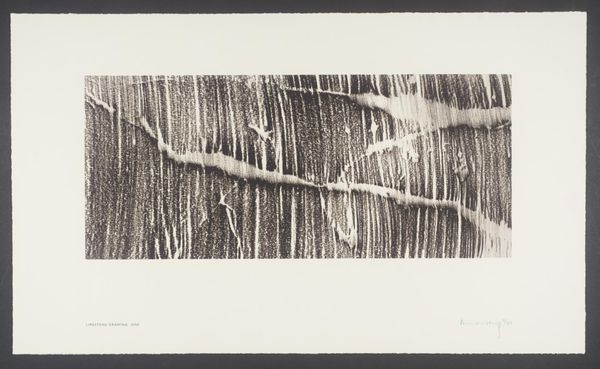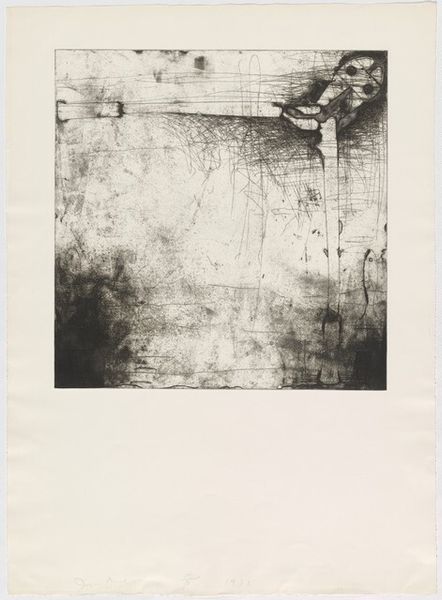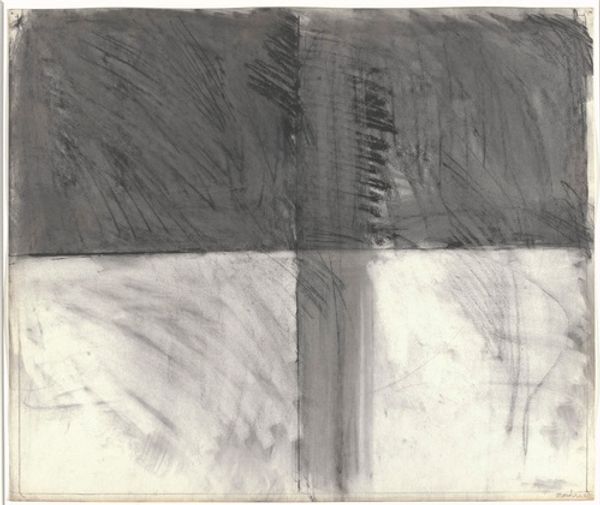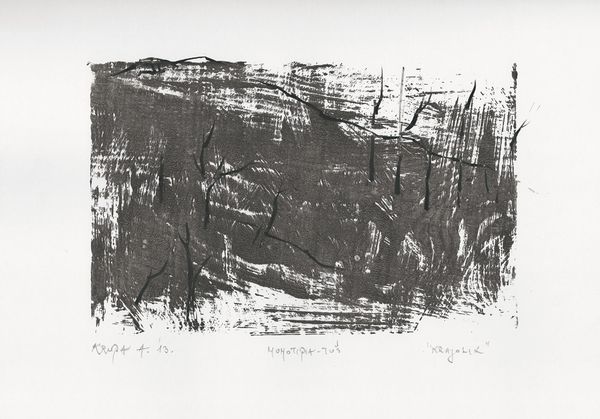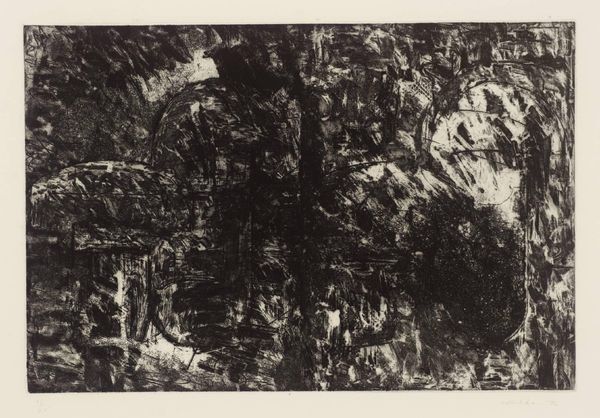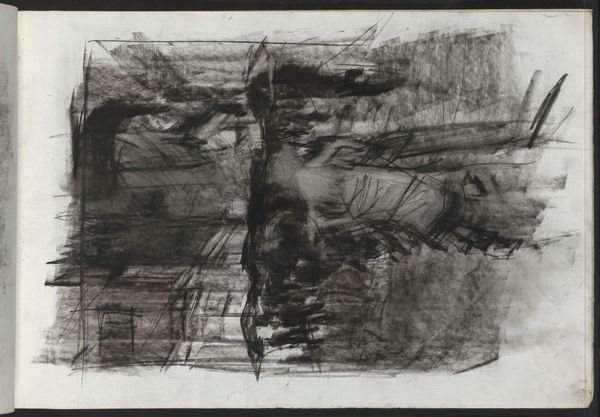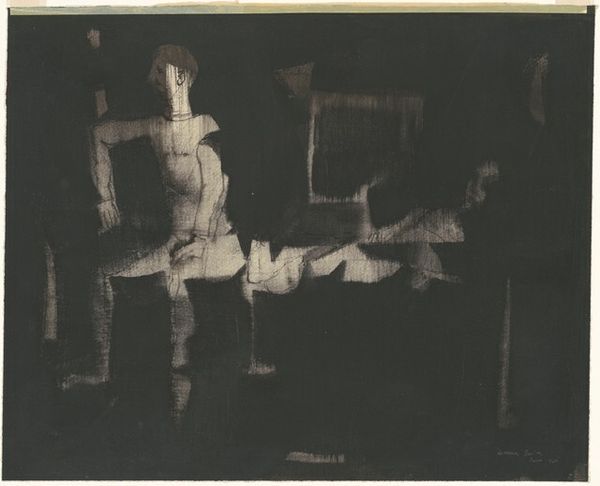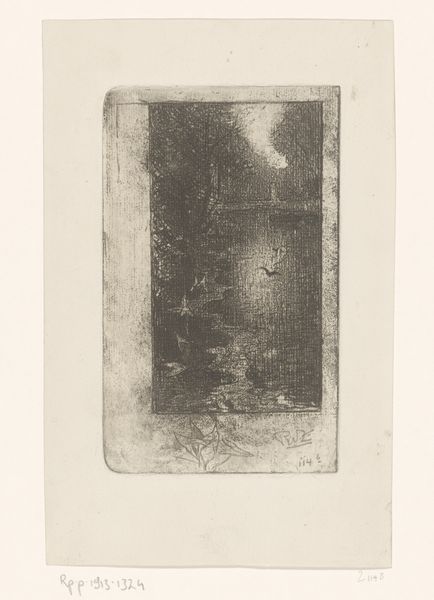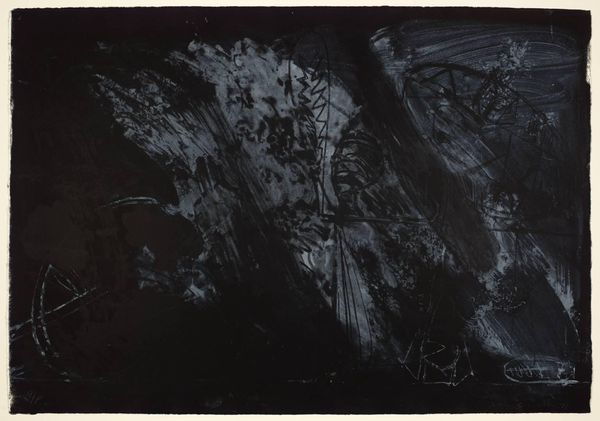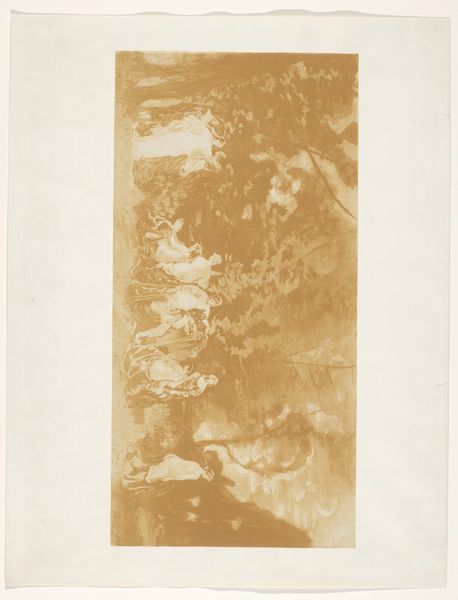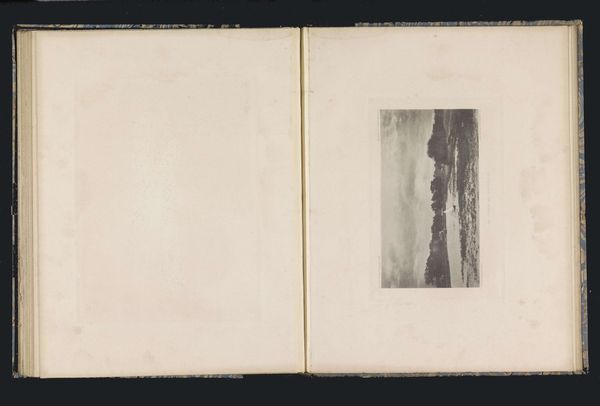
Dimensions: image: 240 x 500 mm
Copyright: © Richard Long | CC-BY-NC-ND 4.0 DEED, Photo: Tate
Curator: Richard Long's "Limestone Drawing Two" presents us with a fascinating use of the titular material. Its dimensions are 240 by 500 mm, and it is currently held in the Tate Collections. Editor: It strikes me as an incredibly tactile piece, almost like a rubbing from an ancient stone surface. You can practically feel the texture. Curator: Long's work frequently challenges the traditional gallery setting. He brings the outside in. The marks are not just aesthetic; they are indexical of the landscape itself. Editor: Absolutely. The process is integral here. How did Long manipulate the limestone? Was it ground, dissolved, applied directly? The labor involved intrigues me. Curator: The ambiguity serves a purpose. Long encourages viewers to consider how our engagement with the natural world is mediated by the gallery. Editor: It's more than just visual. It's about the weight, the feel, the very substance of the earth transformed into art. Curator: Ultimately, "Limestone Drawing Two" challenges our notions of what constitutes a drawing and how we assign value to natural materials within an art context. Editor: Indeed, it leaves you pondering the transformation, the artistic intervention, and the inherent beauty of raw materials.
Comments
tate 7 months ago
⋮
http://www.tate.org.uk/art/artworks/long-limestone-drawing-two-p78720
Join the conversation
Join millions of artists and users on Artera today and experience the ultimate creative platform.
tate 7 months ago
⋮
This is one of a suite of four screenprints (see Tate P78717-19) Long made from direct contact with the surfaces of slabs of slate and limestone. Limestone Drawing Two, as its title indicates, is based on a pencil rubbing taken from textured limestone. The drawing was turned into a screenprint using a photo-separation process and printed using repeated additions of ink until the image had reached the tonal balance required by the artist. The portfolio was printed by Advanced Graphics, London and published by Ridinghouse Editions, London, in an edition of forty plus ten artist’s proofs. Tate’s copy is the seventh in the edition.
